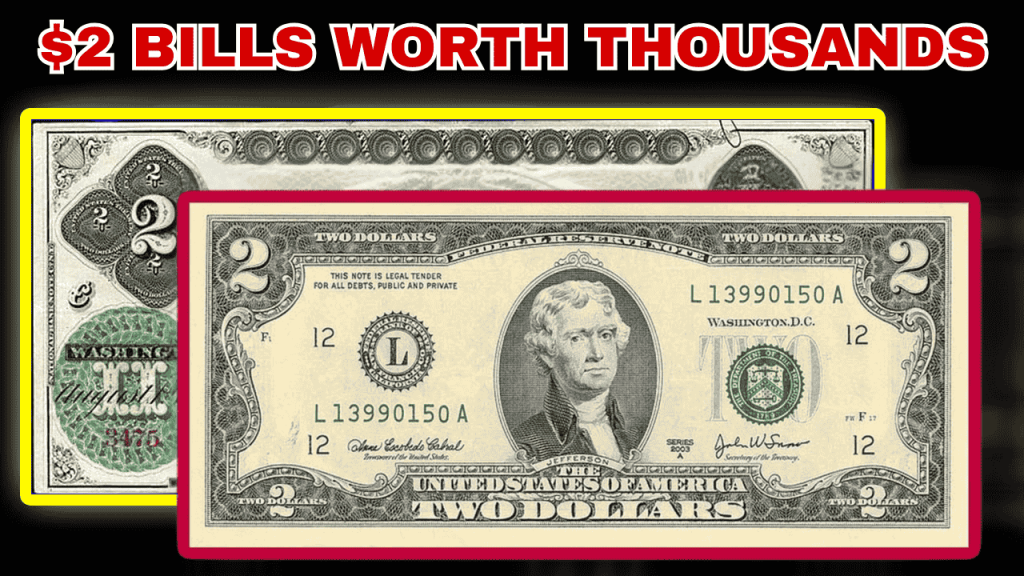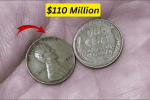
While most Americans consider $2 bills uncommon but not particularly special, certain versions of this denomination can be surprisingly valuable. Though rarely spotted in everyday transactions, specific $2 notes have become prized possessions among currency collectors, with some specimens fetching hundreds or even thousands of dollars due to their rarity, age, or unique characteristics.
The Evolution of the $2 Bill
The $2 bill has undergone significant transformations since its introduction in 1862. These changes in design, security features, and production quantities have created several collectible versions throughout its 160-year history.
Initially featuring Alexander Hamilton, the bill was redesigned in 1869 to display Thomas Jefferson, who remains the face of the denomination today. The evolution continued with the introduction of small-sized notes in 1928, a production halt in 1966, and a celebrated reintroduction in 1976 for America’s bicentennial celebrations.
Despite remaining legal tender and still being produced, many Americans believe the $2 bill is no longer in circulation, adding to its mystique and collectibility.
Most Valuable $2 Bills to Look For
Certain editions of the $2 bill stand out as particularly valuable to collectors. Here are the most sought-after versions:
1. 1862 and 1869 Legal Tender Notes
These earliest $2 bills featured Alexander Hamilton and are highly prized by collectors and historians alike. In uncirculated condition, these notes can command between $2,800 and $3,800. Their historical significance as some of America’s first paper currency contributes significantly to their value.
2. 1890 Treasury or “Coin” Notes
Known as “Coin Notes” because they were redeemable for gold or silver coins, these distinctive bills have fetched $4,500 or more at auctions. Their limited production and historical importance make them particularly desirable among serious collectors.
3. 1928 Red Seal Notes
As the first small-format $2 bills produced, these notes featuring a distinctive red Treasury seal have special significance. While circulated versions may sell for $5 to $175 depending on condition, uncirculated specimens can exceed $1,000 in value.
4. 1976 Bicentennial Notes
Created to commemorate America’s 200th anniversary, most of these notes are worth only slightly more than face value ($2-$20). However, those with special serial numbers can be worth up to $900, while rare “ladder notes” with sequential digits can sell for thousands.
Value-Enhancing Characteristics
Several factors can dramatically increase a $2 bill’s value beyond its face amount:
Age and Rarity
Generally, older bills, especially those printed before 1928, command higher prices due to their scarcity. Pre-Federal Reserve notes from the 19th century are particularly valuable.
Physical Condition
The grading system for currency is precise and significantly impacts value:
- Uncirculated: Bills showing no evidence of handling, folding, or wear fetch premium prices
- About Uncirculated: Very minor handling with no significant creases
- Extremely Fine: Minor creases but still crisp with good color
- Very Fine: Multiple folds but still clean
- Fine and below: Showing significant wear, reducing value considerably
Professional grading from services like PCGS or PMG can substantially increase market value and buyer confidence.
Treasury Seal Color
The color of the Treasury seal provides important clues about a bill’s era and value:
- Red seals (pre-1966): Generally more valuable than modern notes
- Blue seals (Silver Certificates): Often command higher prices due to their backing by silver
- Green seals (modern notes): Usually worth face value unless they feature special serial numbers or printing errors
Special Serial Numbers
Collectors particularly value notes with distinctive serial numbers:
- Ladder notes: With perfectly sequential digits (e.g., 12345678)
- Radar or palindrome notes: Reading the same forward and backward (e.g., 12344321)
- Low serial numbers: Especially those under 100 (e.g., 00000082)
- Binary notes: Containing only two digits (e.g., 10010110)
- Solid numbers: With all identical digits (e.g., 33333333)
Printing Errors
Mistakes during the printing process create rare variants that collectors eagerly pursue:
- Misaligned or missing Treasury seals
- Ink errors or smears
- Double printing of design elements
- Duplicate serial numbers
- Cutting errors or misaligned borders
Comparing Common vs. Valuable $2 Bills
Understanding the differences between ordinary and valuable $2 bills can help identify potential treasures:
| Feature | Common $2 Bills | Valuable $2 Bills |
|---|---|---|
| Issue Date | 1976 or later | Pre-1928 or limited productions |
| Condition | Circulated, signs of wear | Uncirculated, minimal handling |
| Seal Color | Green | Red or blue |
| Serial Number | Standard sequence | Special patterns (ladder, radar, etc.) |
| Printing Quality | Normal | Contains errors or misprints |
Where to Sell Valuable $2 Bills
If you discover a potentially valuable $2 bill, several markets exist for selling it:
Specialized Auction Houses
For truly rare specimens, auction houses like Heritage Auctions or Stack’s Bowers specialize in numismatic items and can help reach serious collectors willing to pay premium prices.
Currency Dealers
Professional numismatists can accurately assess your bill’s value and often make immediate purchase offers, though typically at wholesale rather than retail values.
Collector Events
Currency shows and collector conventions provide opportunities to connect directly with buyers, potentially securing better prices without intermediary fees.
Online Platforms
For less valuable but still collectible notes, online marketplaces like eBay offer access to a wide audience, though authentication concerns may affect pricing.
Conclusion
The $2 bill occupies a unique position in American currency—common enough to still be in circulation yet rare enough in everyday use to maintain an air of mystique. While most $2 bills encountered today are worth only their face value, certain specimens with the right combination of age, condition, and distinctive features can be surprisingly valuable.
Before spending that $2 bill tucked away in your wallet or drawer, take a moment to examine its date, seal color, serial number, and condition. You might just be holding a piece of currency history worth far more than its spending power. Even if your bill isn’t a rare treasure, preserving it can be a meaningful way to connect with America’s financial heritage—and perhaps one day, as production patterns change, today’s common notes might become tomorrow’s collectibles.
